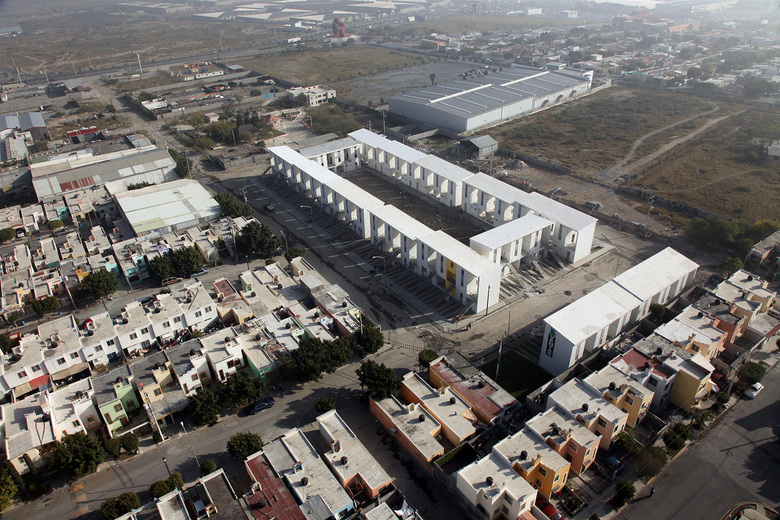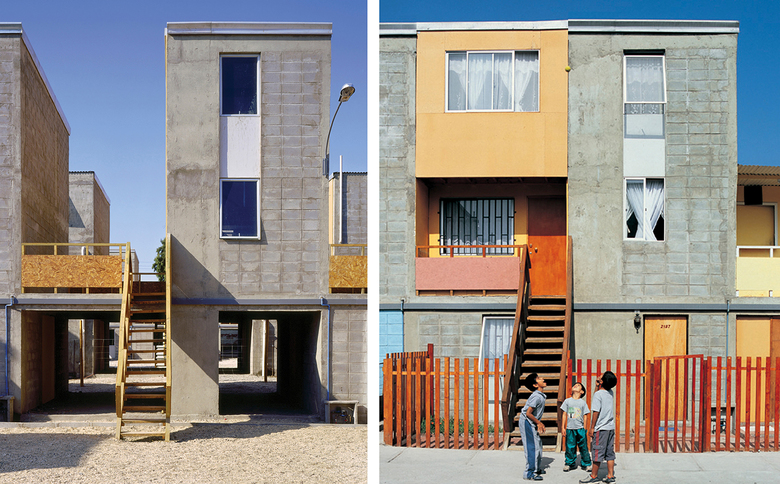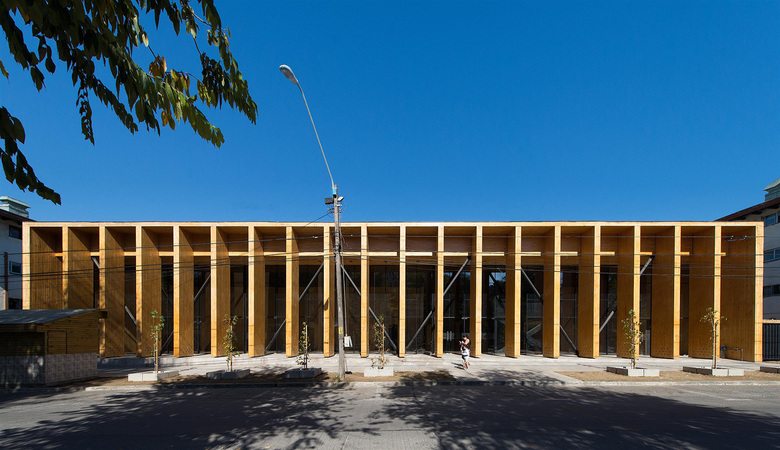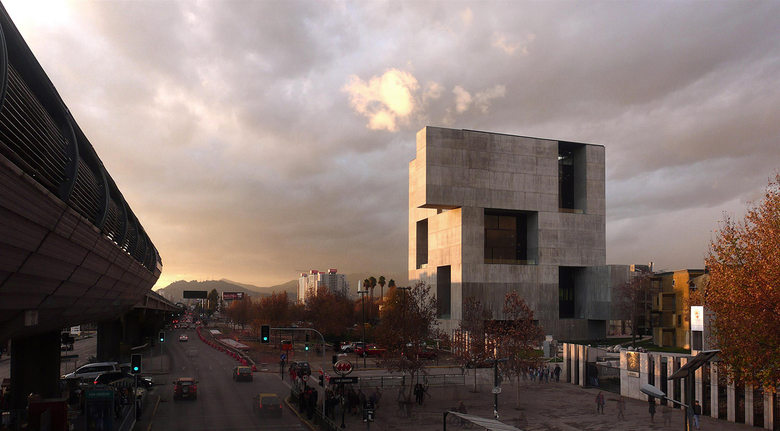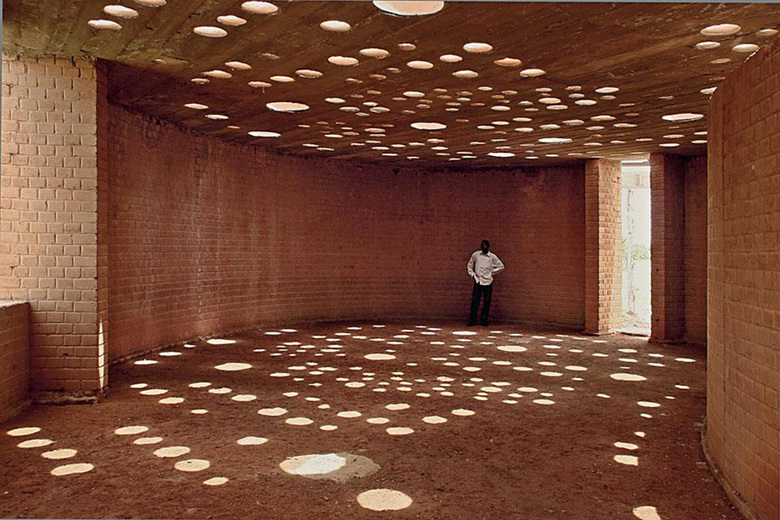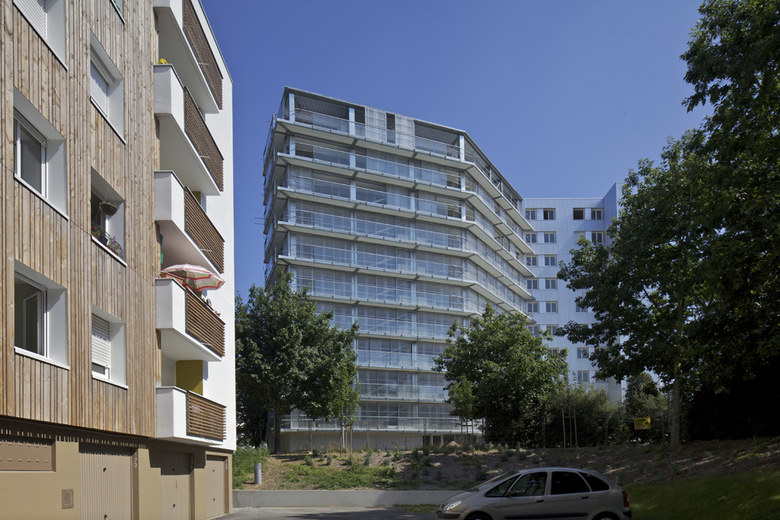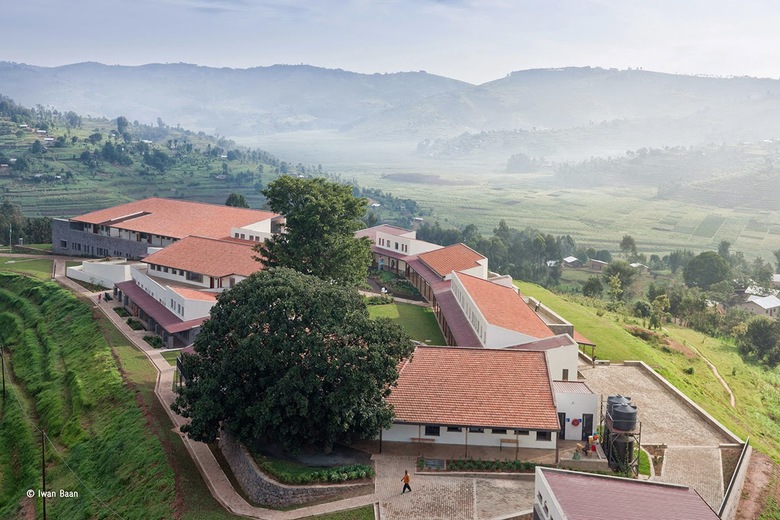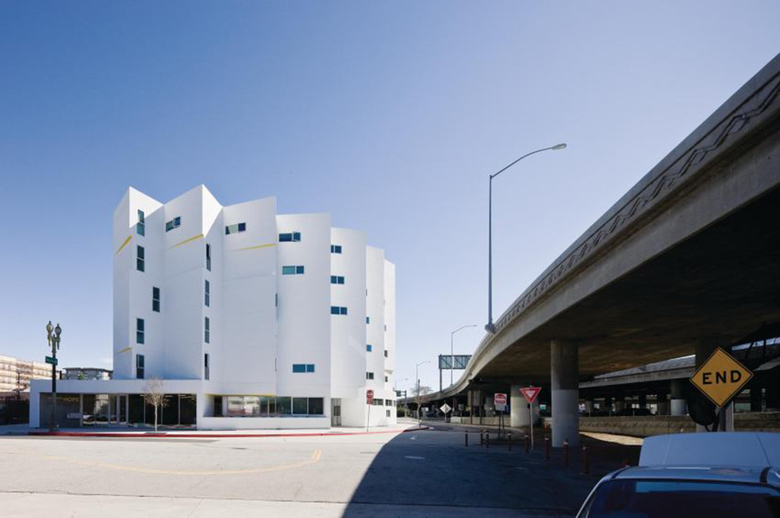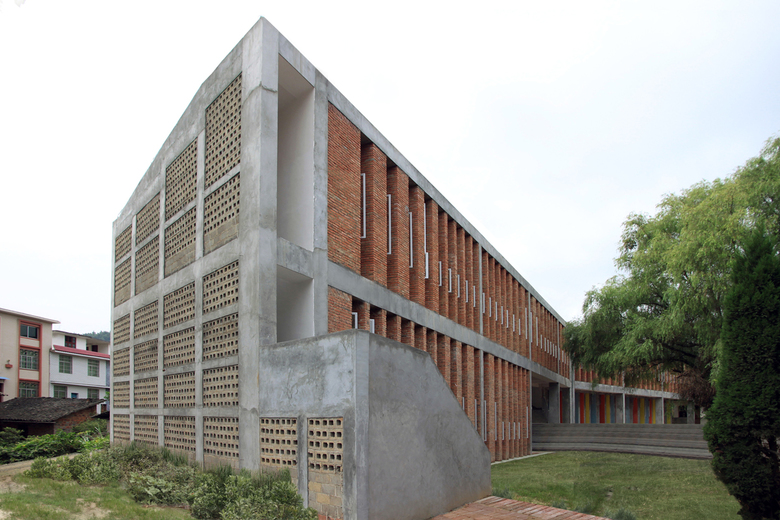Alejandro Aravena and the Future of the Pritzker Prize
John Hill
25. 一月 2016
Alejandro Aravena: Monterrey Housing, 2010, Monterrey, Mexico (Photo: Ramiro Ramirez)
What does the selection of Alejandro Aravena as the 2016 Pritzker Architecture Prize laureate mean for the future of "architecture's Nobel"? World-Architects ponders the question and offers a handful of nominations for future Pritzker Prize juries to consider.
Although the naming of Chilean architect Alejandro Aravena as the prize's 41st laureate may not signal, in and of itself, a new direction for the Pritzker Prize, its arrival two years after Japan’s Shigeru Ban won the award indicates the Pritzker jury is commending social engagement and humanitarian architecture as much as formal innovation and technical mastery.
Though practicing on different continents, Aravena and Ban balance private commissions – the traditional purview of architects and Pritzker winners (see the list at right) – with low-cost, low-income housing and disaster relief projects. Ban focuses on the latter in particular, taking his skills to locales hit by natural and human-made disasters and building temporary housing with cardboard tubes and other atypical materials; Aravena, though venturing into disaster relief in post-tsunami Constitución, is known mainly for the former, particularly his incremental housing projects, in which he designs "half of a good house" for only $7,500 per unit, with residents completing them as the means become available. These "projects of public interest and social impact," as the official Pritzker announcement describes them, are what Aravena and his firm ELEMENTAL are known for, and what led to him to be selected as the 41st recipient of the Pritzker Prize.
Alejandro Aravena: Quinta Monroy Housing, 2004, Iquique, Chile. eft: “Half of a good house” financed with public money; Right: Middle-class standard achieved by the residents themselves. (Photos: Cristobal Palma)
Critical responses to 48-year-old Aravena's Pritzker (and there's always plenty of them following the announcement) have been primarily positive: at Vanity Fair, Paul Goldberger described his work as "modest, practical, and exceptionally elegant"; Alex Bozikovic, at the Globe and Mail, commendably linked the two poles of Aravena's portfolio with the statement that "artful architecture ... is not dead; it just needs to find the right purpose"; and Blair Kamin expressed his love for Aravena's half of a good house idea in his Chicago Tribune column, while admitting, "the architecture world needs an Aravena as much as it needs a Hadid."
Detractors have been vocal but not as numerous, particularly – speaking of Hadid – Patrik Schumacher, who took to Facebook to lament that "the PC takeover of architecture is complete: Pritzker Prize mutates into a prize for humanitarian work." Many critics have pondered the significance of Aravena winning the award one year after he left the jury, but for the most part the criticism has been positive, focused on his humanitarian work, and speculative of what it means for the Pritzker Prize and for the profession.
Alejandro Aravena: Constitución Cultural Centre, 2014, Constitución, Chile (Photo: Felipe Diaz)
Although Schumacher's statement strongly dismisses the humanitarian work of Aravena's firm ELEMENTAL, those projects exist within a portfolio that includes university buildings (most at the Universidad Católica de Chile, which co-owns ELEMENTAL with the Chilean energy company COPEC), parks, pavilions, and an office building under construction in Shanghai. In other words, the incremental housing projects are balanced by more overtly formal, capital-A architecture, much in the vein of Shigeru Ban. With this in mind, it's hard to agree that the Pritzker has mutated into a prize for humanitarian work. The award going to an architect whose work "epitomizes the revival of a more socially engaged architect," as the Pritzker statement describes it, makes it clear this strand of practice, which is not going away anytime soon, will continue to find praise through important awards.
Alejandro Aravena: UC Innovation Center – Anacleto Angelini, 2014, Universidad Católica de Chile, Santiago, Chile (Photo: Nina Vidic)
Social engagement and humanitarian work are on the rise, as architects strive to find ways to address, through their own medium, the inequalities rampant in the world. Since architects are still slated with giving form to buildings and other structures, it's safe to say that future Pritzkers will be awarded to architects who, like Ban and Aravena, balance the social and the formal, the humanitarian and the exclusive, the low-cost and the high-budget. (At the same time, architects like David Adjaye and Bjarke Ingels, who excel at giving form to cultural and other high-profile projects, will not be ignored by the Pritkzer Prize jury.) With this direction in mind, below is a brief presentation of five architects that could – and should – win the Pritzker Prize for their skills as architects and compassion as humans.
Diébédo Francis Kéré: School Library, Gando, Burkina Faso
Diébédo Francis Kéré
The African-born, German-trained Kéré came to international attention with a 2004 Aga Khan Award for Architecture for the Gando Primary School in Burkina Faso, which the jury praised for "its elegant architectonic clarity achieved with the most humble of means and materials, and for its transformative value." Kéré designed the school, but he also raised the funds to build it and secured government support to train the locals in construction, something he has continued with an extension, teacher's housing and a library for the same school. The library, now under consruction, takes his skills with traditional materials and consruction in a new formal direction, one that is sure to bring him more attention once complete. Beyond his native Burkina Faso and neighboring Mali, Kéré has undertaken projects in Switzerland, the United States, India and China. In addition to his skills as an architect, Kéré's mixture of humbleness, honesty and passion – a rarity of sorts these days – makes him a welcome Pritzker candidate.
Lacaton & Vassal: Housing transformation, Saint-Nazaire, La Chesnaie
Lacaton & Vassal
The buildings and landscapes designed by the Parisian duo of Anne Lacaton and Jean Philippe Vassal are distinctive in that they are often invisible. In one of their earliest projects, a triangular public space in Bordeaux, their approach was to literally do nothing – they observed that the square was already beautiful and therefore needed maintenance rather than embellishment. This approach, which gives precedence to existing conditions, can be found in cultural projects they carry out as well as the numerous low-income, mid-20th-century housing projects around Paris and in other parts of France that the duo (with Frédéric Druot on the much published and exhibited Tour Bois Le Pretre) has transformed through minimal means, particularly the removal of the existing exterior walls in favor of new glassed-in extensions. Their strategies of recycling and economy, particularly in regard to housing, are especially commendable; something the Pritzker jury should consider beyond the usual feats of new construction.
MASS Design Group: Butaro District Hospital, Rwanda (Photo: Iwan Baan)
MASS Design Group
Boston's MASS Design Group was founded by Michael Murphy and Alan Ricks in 2008 when they were working on the Butaro District Hospital in Rwanda. That promising start led the studio to venture to other continents to "provide infrastructure, buildings, and the human and physical systems necessary for growth, dignity, and well-being"; another notable example is the GHESKIO Cholera Treatment Center in Haiti, a much smaller project that nevertheless parallels the hospital in Rwanda through an understanding of context, the participation of locals in a "lo-fab" construction process, and in architectural form that can be described easily as beautiful. MASS has returned to Butaro to add doctor's housing and a cancer treatment center for the hospital, illustrating the longterm relationships fostered by working with nonprofits and other "atypical" clients. Projects in the works show a continued interest in empowering people where needed and a quality of design that would have been found otherwise in buildings with larger budgets.
Michael Maltzan: New Carver Apartments, Los Angeles (Photo: Iwan Baan)
Michael Maltzan
Four of the six architects presented here were part of the exhibition, Small Scale Big Change: New Architectures of Social Engagement, which took place at the Museum of Modern Art (MoMA) in 2010: Aravena/ELEMENTAL, Kéré, Lacaton & Vassal, and Los Angeles architect Michael Maltzan. Although Maltzan gained early recognition for cultural and high-end residential projects, more recently he has worked on at least four buildings in LA with Skid Row Housing Trust, which recognizes the importance of design in their mission to "[provide] permanent supportive housing so that people who have experienced homelessness, prolonged extreme poverty, poor health, disabilities, mental illness and/or addiction can lead safe, stable lives in wellness." Projects such as the New Carver Apartments and the Inner-City Arts campus (for another Skid Row organization) have an avant-garde flair that carries over from Maltzan's private commissions; this is a commendable trait that has improved parts of LA that were otherwise not considered by architects.
Rural Urban Framework: Tongjiang Recycled Brick School, Jianxi Province, China (Photo: RUF)
Rural Urban Framework
With a desire to react against the rampant modernization taking place in China, the work of Joshua Bolchover and John Lin's Rural Urban Framework (RUF) brings to mind 2012 Pritzker Prize laureate Wang Shu, who helms Amateur Architecture Studio with his wife Lu Wenyu. Both studios embrace Chinese history, traditional materials and small-scale developments, while creating buildings that are novel and highly appealing. Structured as a nonprofit architectural design and research office based at the University of Hong Kong, RUF works with NGOs and charities "in areas where there is only generic construction," in order to "make spaces that go beyond pure utility: that inspire through their experience of light; material and organization." Highlights are the Tongjiang Recycled Brick School with World Vision and Mulan Primary School with the local education authority and charity from Hong Kong. These and other projects contributed to the duo winning the Curry Stone Design Prize last year, a prize won, it should be noted, by Alejandro Aravena and ELEMENTAL in 2010 for their incremental housing projects.
PRITZKER ARCHITECTURE PRIZE LAUREATES
2016 Alejandro Aravena
2015 Frei Otto
2014 Shigeru Ban
2013 Toyo Ito
2012 Wang Shu
2011 Eduardo Souto de Moura
2010 Kazuyo Sejima & Ryue Nishizawa
2009 Peter Zumthor
2008 Jean Nouvel
2007 Richard Rogers
2006 Paulo Mendes da Rocha
2005 Thom Mayne
2004 Zaha Hadid
2003 Jørn Utzon
2002 Glenn Murcutt
2001 Jacques Herzog & Pierre de Meuron
2000 Rem Koolhaas
1999 Norman Foster
1998 Renzo Piano
1997 Sverre Fehn
1996 Rafael Moneo
1995 Tadao Ando
1994 Christian de Portzamparc
1993 Fumihiko Maki
1992 Alvaro Siza
1991 Robert Venturi
1990 Aldo Rossi
1989 Frank Gehry
1988 Oscar Niemeyer, Gordon Bunshaft
1987 Kenzo Tange
1986 Gottfried Böhm
1985 Hans Hollein
1984 Richard Meier
1983 I.M. Pei
1982 Kevin Roche
1981 James Stirling
1980 Luis Barragán
1979 Philip Johnson
